Aštrioji Kirsna Manor is one of the largest manors in Užnemunė region, containing 19 buildings withstanding and a historic garden. Among others in Lithuania, the manor stands out by authentic location of homestead and farmstead buildings, original pond system and abundance of garden elements. The influence of neoclassical and romantic movements are seen in the architecture of manor’s buildings.
Currently, Aštrioji Kirsna Manor is privately owned though open to public, offering venue services for weddings and other private celebrations. Manor’s equestrian centre is offering horse riding lessons, horse housing, care and rehabilitation services. Also, there is a possibility for a guided manor tour, however all services must be booked in advance. Further information is available on Aštrioji Kirsna Manor Facebook page or by phone.
1500
Kirsna is a name of the Yotvingian origin and is a river that flows through the area, while Aštrioji seems to be a Lithuanian word adaptation from Polish word Ostrów, meaning small island.
The area of Aštrioji Kirsna was first mentioned in 1506 when it was given by Grand Duke of Lithuania and King of Poland Alexander Jagiello (1461-1506) to one of his courtiers.
Presumably in the late 1560’s the area was acquired by castellan of Kyiv Povilas Sapiega (Paweł Sapieha, 1523-1580) who is considered to be the founder of Aštrioji Kirsna Manor.
1600
During 17th century, Aštrioji Kirsna manor was owned by Romanas Praževskis (Roman Prażewski), then by Lukoševičiai family (Łukaszewiczowie), later by Matas Jonas Zakševskis (Mateusz Jan Zakszewski), and then by Felicijonas Karolis Kučborskis (Felicjan Karol Kuczborski z Kuczbork).
1700
In 1728, the manor became a long-term home of Karenga family.
In 1755, when the manor was inherited by deputy judge of Kaunas County Court, Juozapas Tadas Karenga (Józef Tadeusz Karęga), the manor’s inventory was drawn up, which indicated a two-story wooden manor house in decaying condition, a two-story brick creamery, stables, a shed, a barn, distillery and a mill. There also were indicated three taverns that belonged to the manor.
Juozapas Tadas Karenga together with his wife Petronėlė Prozoraitė (Petronella z Prozorów), renewed the manor and in 1777, a manor plan was drawn up, depicting a one-story manor house with two wing on each side, a chapel, a mill, several outbuildings and three gates.
1800
In 1804, after the death of Juozapas Tadas Karenga, Aštrioji Kirsna Manor was inherited by his eldest son, the head of Kalvarija County noblemen, Benediktas Bonifacas Hektoras Karenga (Benedykt Bonifacy Hektor Karęga, 1774-1838), who in 1800s built a neoclassical manor house that is known as today. Also, he and his wife Ona Pšečiševska (Anna z Przeciszewskich) expanded the estate and transformed the garden into English landscape garden.
In the early 1840s, after the death of Benediktas Bonifacas Hektoras Karenga, the manor was purchased by Vincentas Gavronskis (Wincenty Gawroński, 1783-1860). It is assumed, that he bought the manor with an intention for his son Žygimantas Gavronskis (Zygmunt Gawroński, 1816-1886) to apply his knowledge in economics and farming, which he obtained while studying abroad. During his and his wife Natalija Teodora Ksavera Oginskytė (1826-1867) ownership of the estate, Žygimantas Gavronskis modernised and expanded manor’s farmstead. It is likely, that most of present farmstead buildings were built while Žygimantas Gavronskis was the owner of the manor.
1900
In 1925, agronomist and chairman of Lithuanian Chamber of Agriculture Vladislovas Antanas Kraučiūnas (1887-1942) purchased the manor from Bulinskiai (Buliński) family. In 1927, the new owner established an educational institution of agriculture in the manor.
After Lithuania’s occupation in 1940, soviet government exiled Kraučiūnas family to Siberia, then nationalised the manor and established a state-owned farm (sovkhoz) in 1945.
After Lithuanian Independence restoration in 1990, the manor was returned to Kraučiūnas family.
2000
In 2001, Aštrioji Kirsna manor was sold to present manor owners.
Opening hours:
March 1st - October 31st I-VII 10:00-18:00.
November 1st – February 28th I-VII 10:00-16:00.



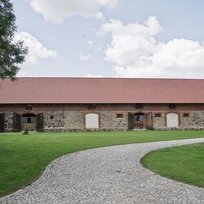
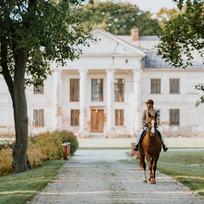
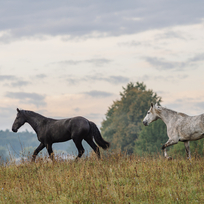
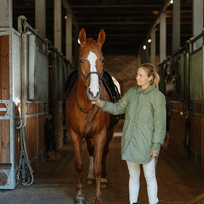
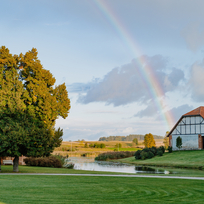
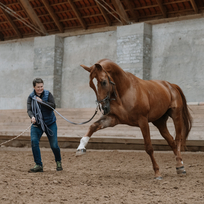
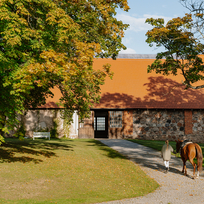
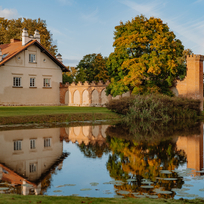
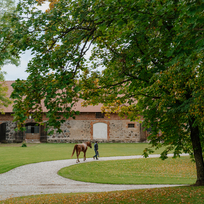
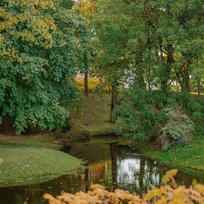
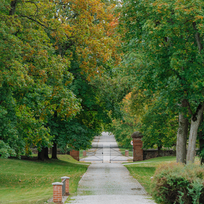
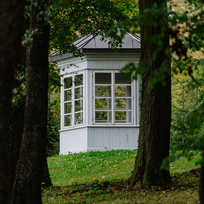







RUDUO.Lapų gausumas,grožis toks tik rudenį.Parkas didelis,viso neapėjau,atidėjau kitam kartui,bet vistiek pasijaučiau kaip dvaro svečias.Pavasarį,kai viskas sužalotos,būsiu čia.Gaila rūmų,kolonos vos laikosi.Kada jo eilė ateis restauravimui?
Tai unikali vieta turinti beveik pekių šimtmečių istoriją. Jei savininkams pavyks, o tikėtina, jog pavyks, atkurti nuniokotą per visokių valdžių kaitą dvaro pastatų ansamblį, tuomet tai taps gyva mūsų valstybės istorinės raidos knyga.
Labai gražus ir didelis parkas, gražūs atkurti ir seni išlikę pastatai...Galima pamatyti arkliukų ir karvyčių. Tik labai gaila,kad nėra jokių informacinių stendų prie pastatų...
Labai gražus ir didelis parkas, gražūs atkurti ir seni išlikę pastatai...Galima pamatyti arkliukų ir karvyčių. Tik labai gaila,kad nėra jokių informacinių stendų prie pastatų...